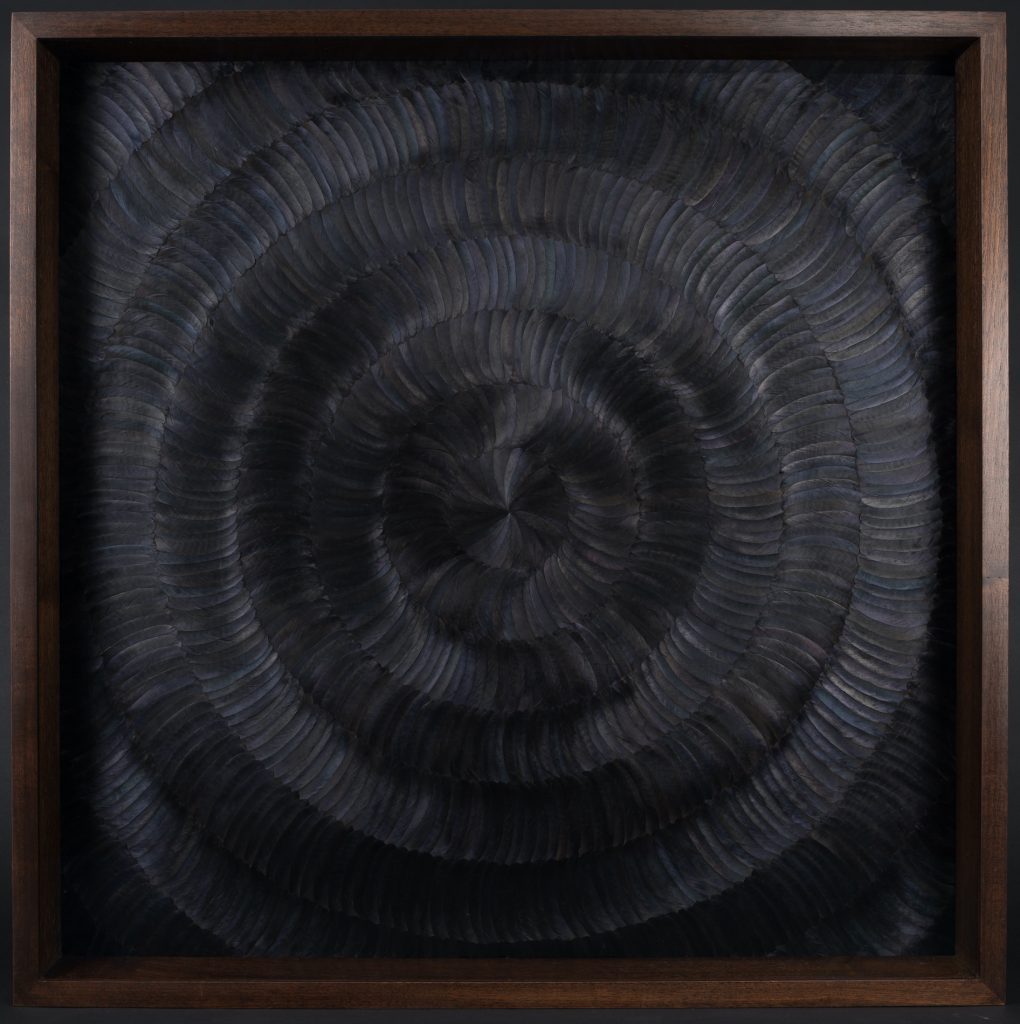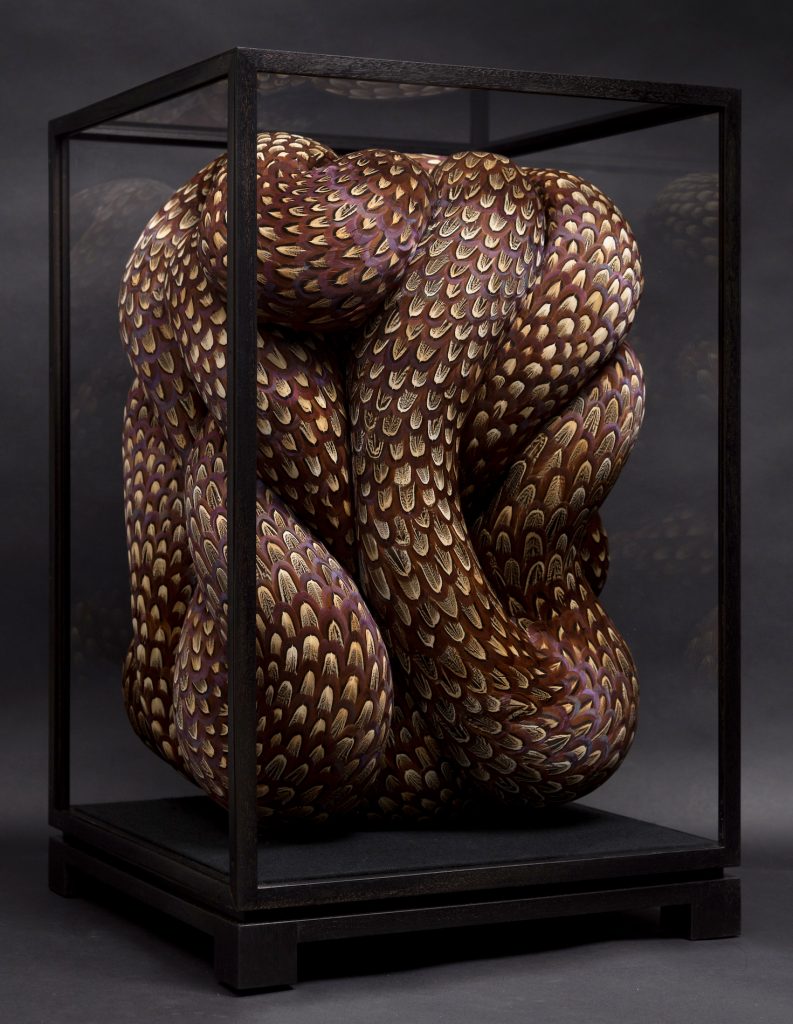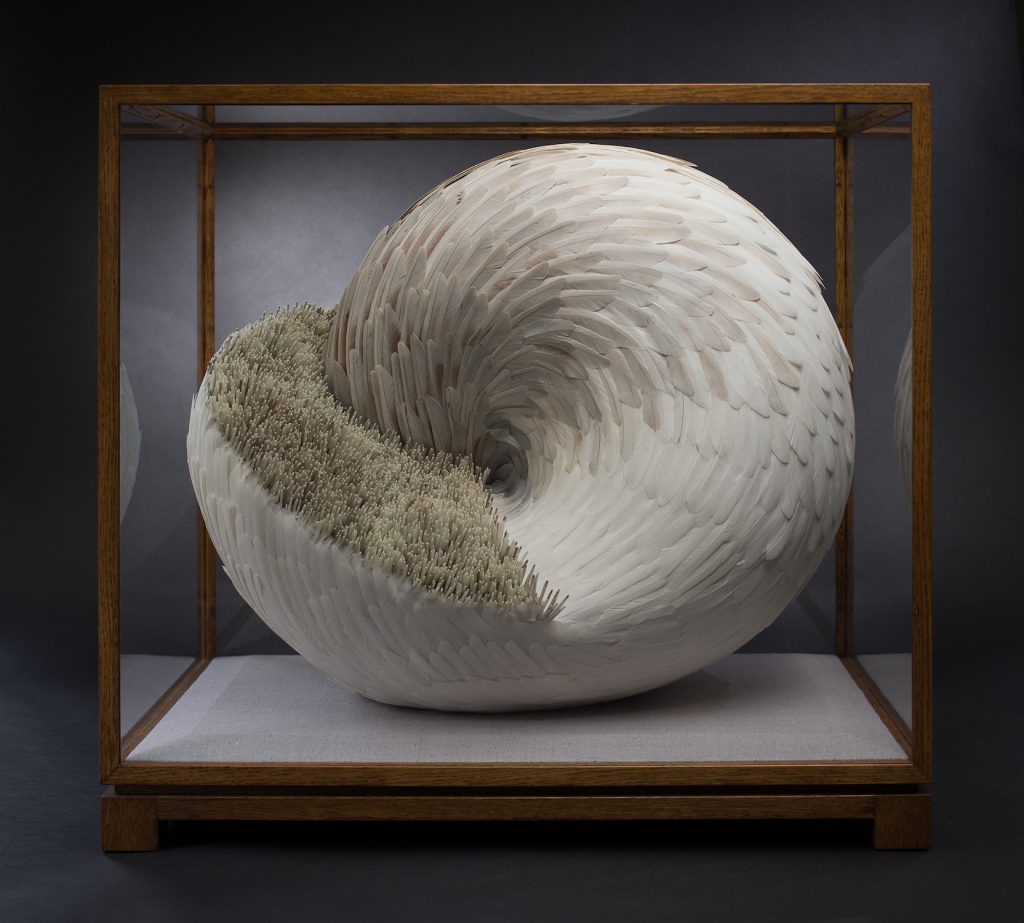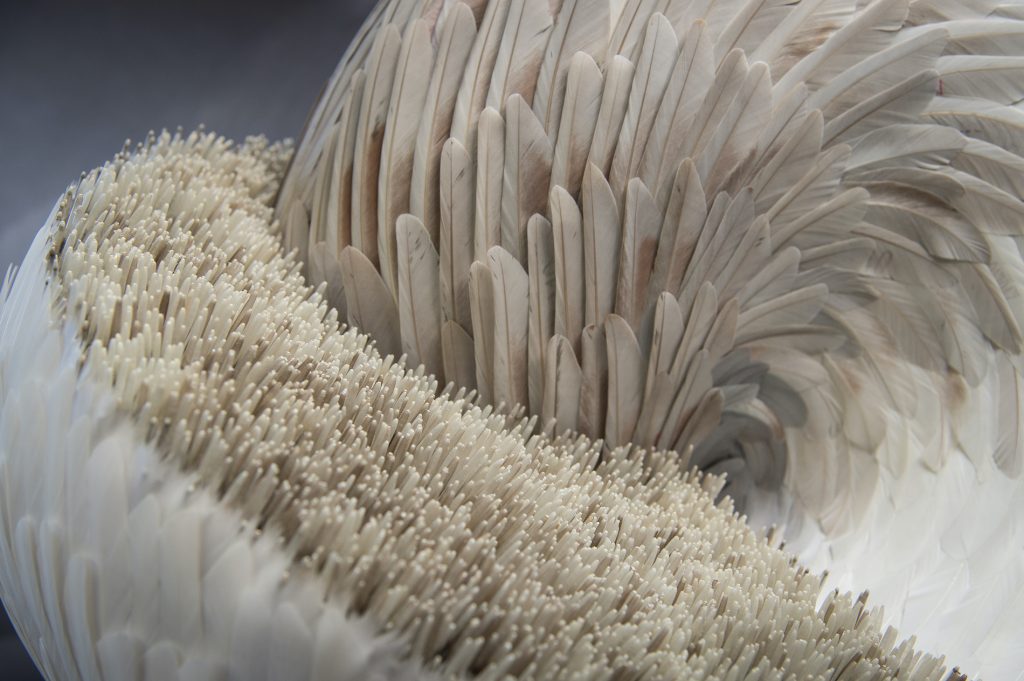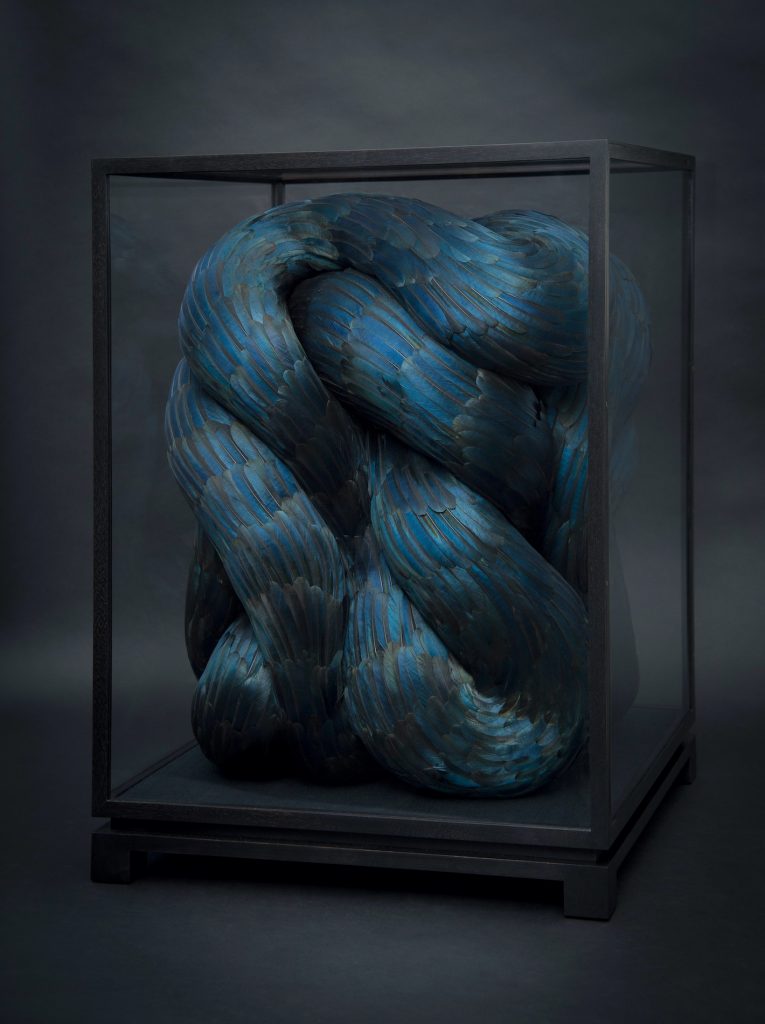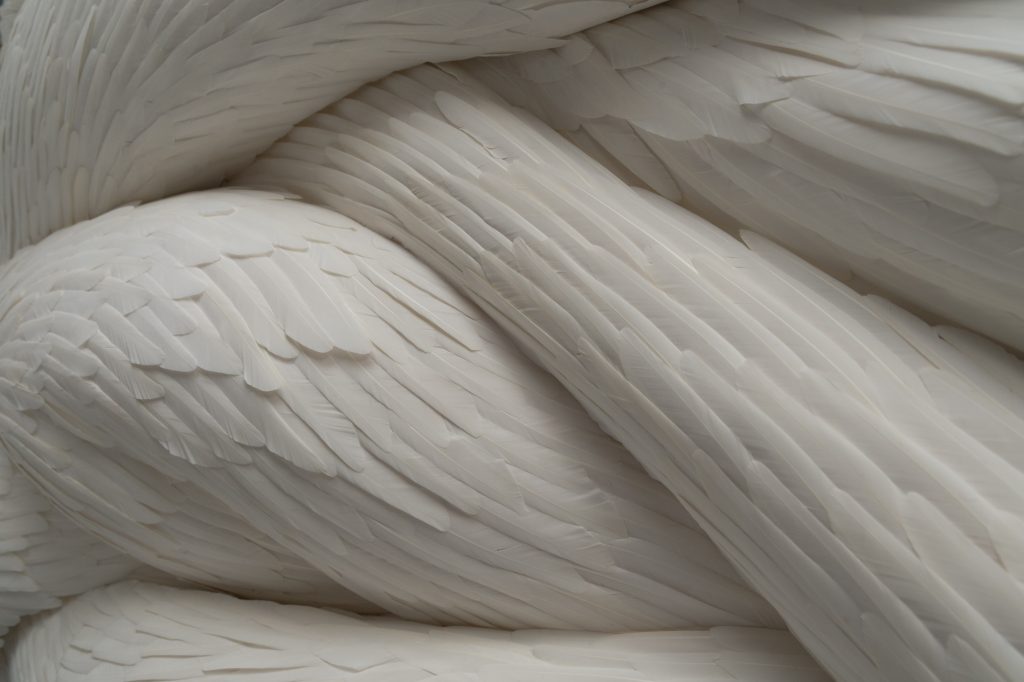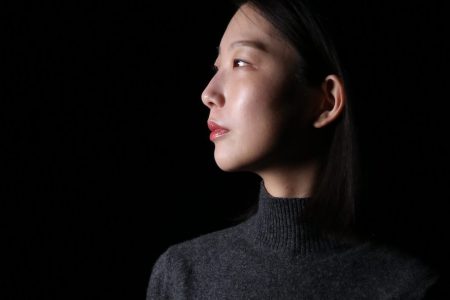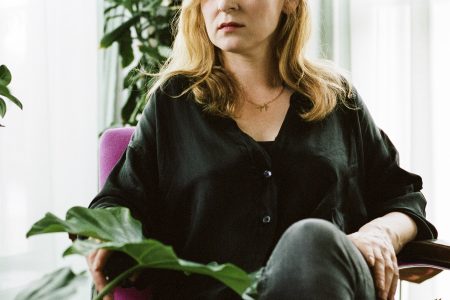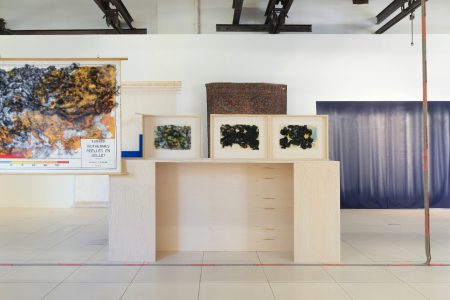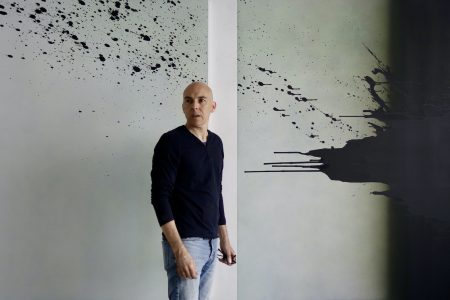Kate MccGwire: Working Instinctively
TLmag spoke to the British sculptor MccGwire’s about her practice which evolves a fascination with dualities, beauty, and natural materials.
The British sculptor Kate MccGwire explores the dualities and complexities of beauty in her practice. Through sculptures made from natural materials, MccGwire often triggers subconscious responses from viewers. After graduating from the Royal College of Art in 2004, MccGwire has exhibited, amongst others, at the Saatchi Gallery (London), the Museum of Art and Design (New York), Musée de la Chasse et de la Nature (Paris), at Glasstress, an official collateral event of the Venice Biennale, and recently published a monograph with Anomie. TLmag took time to explore MccGwire’s practice and fascination with dualities and beauty.
TLmag: Your work revolves around sculpting with feathers. Could you elaborate on how you started to work with feathers as sculptures?
Kate MccGwire (K.M.): I grew up on the Norfolk Broads, well known for its marshland fields and birdlife. My mum has a painting of mine of a peacock feather that I painted when I was about 11, but it took me a while to recognize feathers as an actual material for art-making. After graduating from the Royal College of Art, I purchased a barge on the Thames, which I used as a studio. There I discovered a colony of pigeons which inspired me to collect and use their feathers, often layering them in a variety of forms and directions to mimic the water flowing nearby.
TLmag: In an interview, you mentioned the key role the preordained sequence of feathers play in your work. Could you speak a bit more about this?
K.M: I like to be guided by the materials I use, keeping my mind open to the distinctive possibilities they offer. Each feather is unique and making a sculpture includes responding to preordained sequences – colors, patterns, proportions, and shapes. The beauty of natural forms stems from the symbolism and mythologies we attach to them; the impact of my sculptures relies on intermingled narratives and emotions they produce – from pleasure and amazement to fear and repulsion.
TLmag: Much of your work seems to draw on dualities, such as beauty and grimness. Could you explain what role dualities play in your practice and why you see it as important?
K.M.: Beauty can simultaneously delight the senses and at the same time lull you into a false sense of security – that unnerving sense of pleasure in seeing but not really making sense of what you’re looking at is always important to me… playing with your senses, your knowns and turning them on their head. I don’t want the viewer to get too comfortable.
TLmag: You also often mention how the element of confusion is important to your work, could you elaborate?
K.M.: My intention is to embody uncertainty by creating forms that are simultaneously organic and abstract, appearing fluid yet being static. The interplay of opposites runs through everything I do – my work needs tension to create its internal equilibrium. Ambiguity plays a part in my making process too; feathering is intuitive and hypnotic, and I work instinctively – the resulting sculpture is often quite the opposite.
Cover image: Kate MccGwire studio with SASSE, Photo by Jo Scott Images
